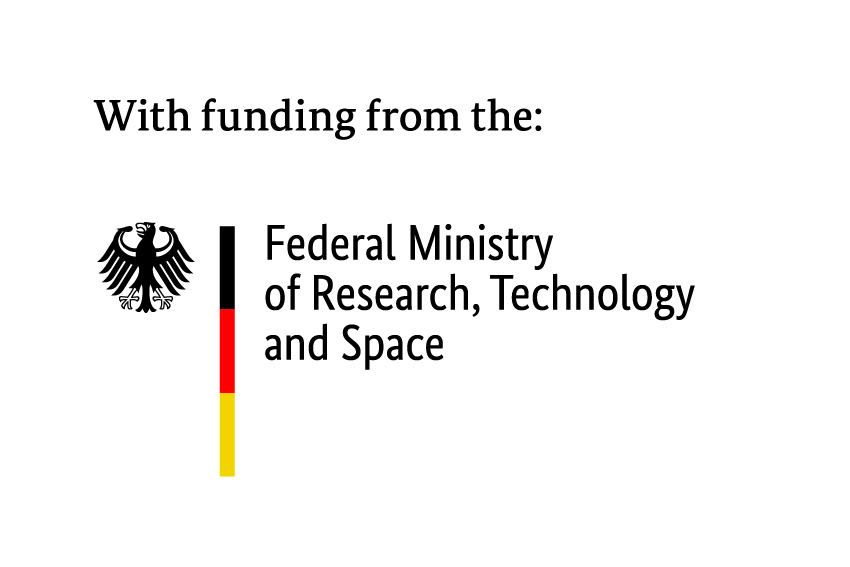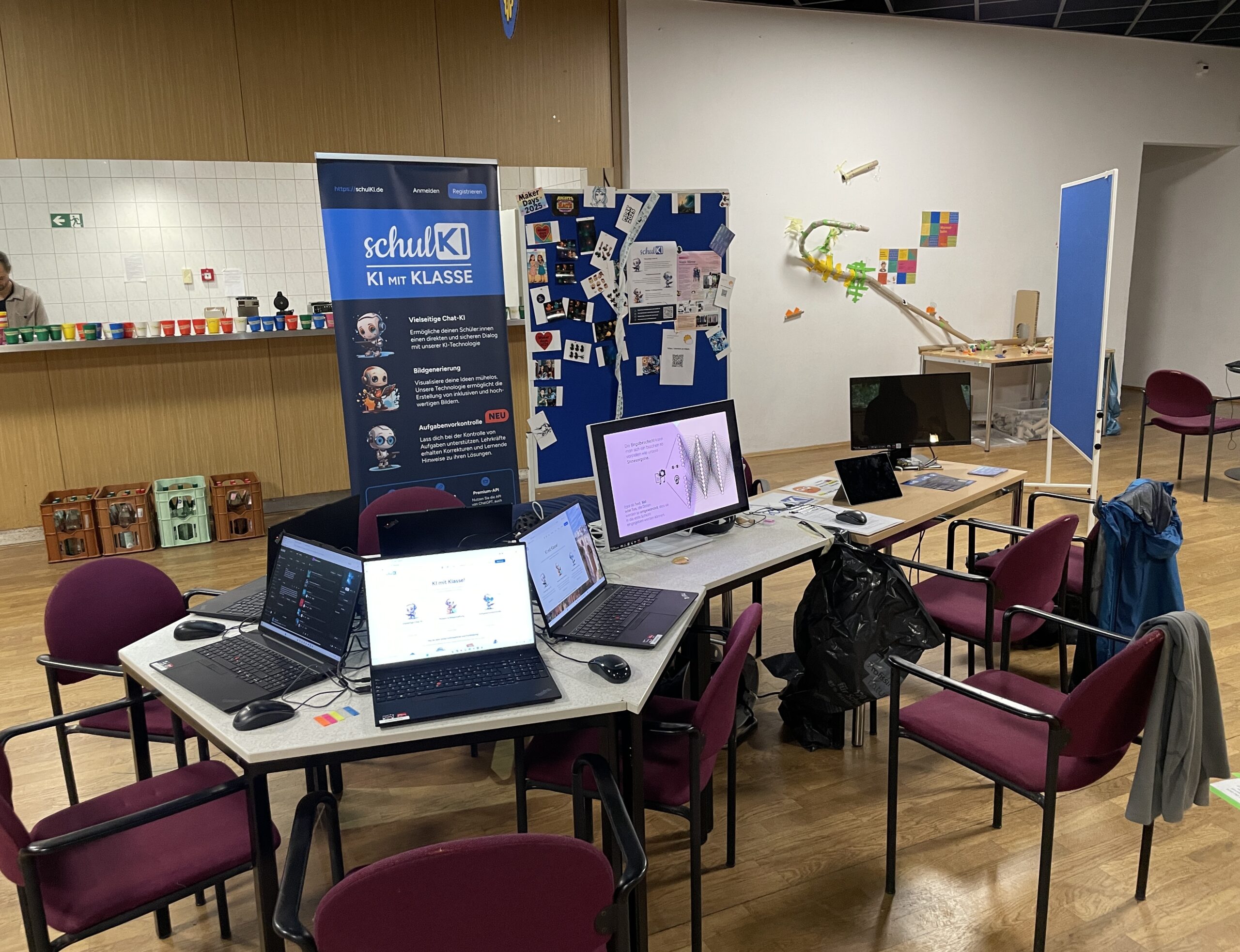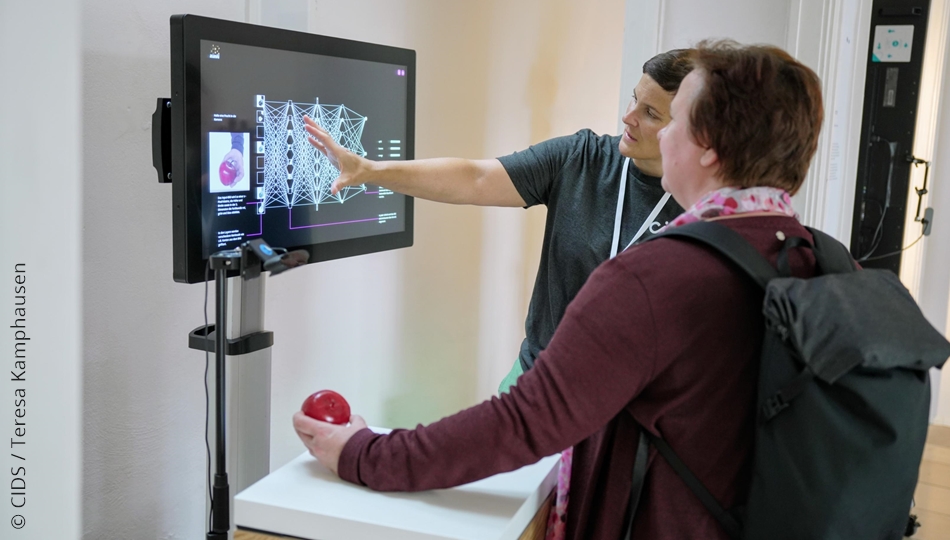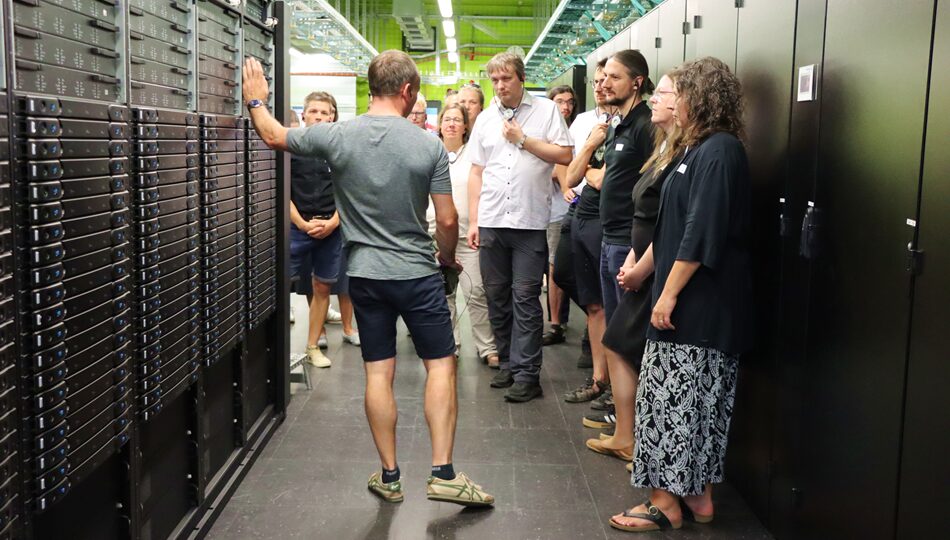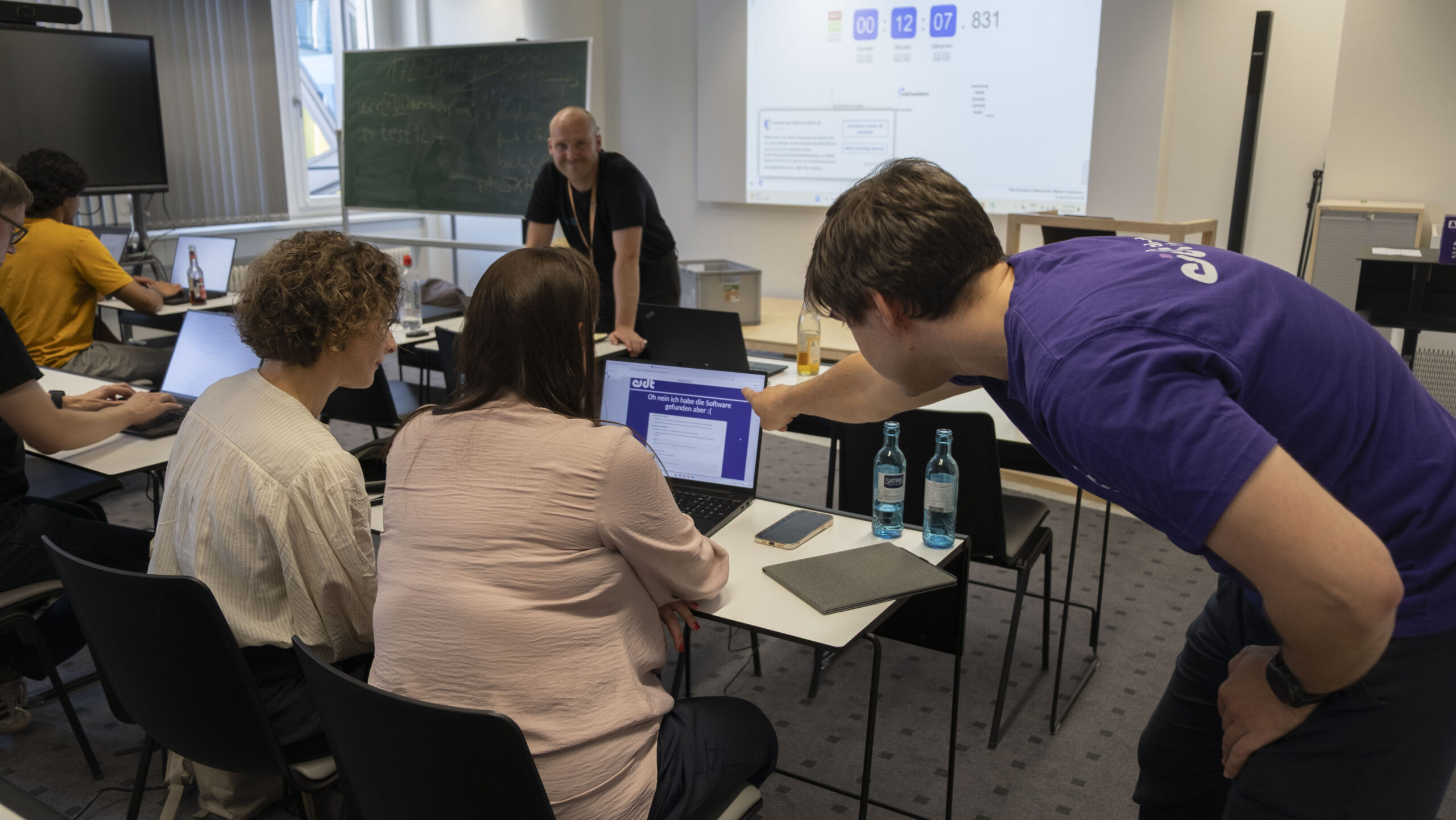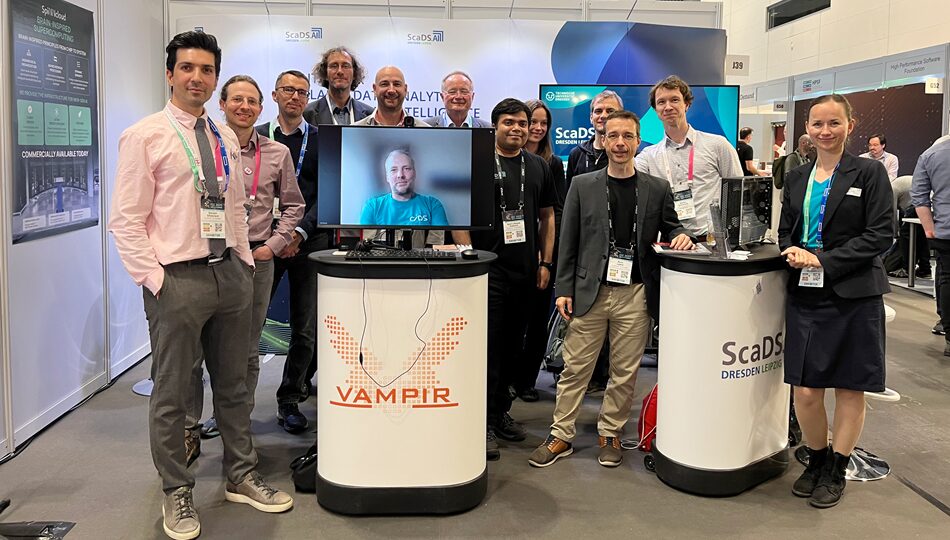
June 13, 2025
ISC High Performance 2025 in Hamburg, Germany

From June 9-13, 2025, ScaDS.AI Dresden/Leipzig, the Center for Information Services and High Performance Computing (ZIH), and SpiNNcloud Systems joined the ISC High Performance 2025 in Hamburg, Germany. This year, the HPC community celebrated the 40th anniversary of the conference that has established itself as the world’s leading forum for advancing the application of HPC in academia, government, and the private sector.
Program
At our joint booth (J39), a number of software and hardware demos were presented by ScaDS.AI Dresden/Leipzig, ZIH, and SpiNNcloud Systems:
ScaDS.AI Dresden/Leipzig
ScaDS.AI Dresden/Leipzig presented various Living Lab demonstrators that showcased the great variety of our research activities – from Machine Learning to Data Analytics, Performance Analysis and more. Sounds interesting? Check out our open source software asanAI, which you can use from home.
Team
- Dr. Siavash Ghiasvand (Research Associate
- Dr. René Jäkel (Administration Director)
- Lena Jurkschat (Research Associate)
- Apurv Deepak Kulkarni (Research Associate)
- Dr. Taras Lazariv (Research Associate)
ZIH
ZIH presented Vampir, a framework for performance analysis, which enables developers to quickly study program behavior at a fine level of detail. Performance data obtained from a parallel program run can be analyzed with a collection of specialized performance views. Intuitive navigation and zooming are the key features of the tool, which help to quickly identify inefficient or faulty parts of a program code. Learn more and download Vampir here.
Team
- Dr. Matthias Lieber
- Jens Lukaschkowitz
- Sandra Mänzel
- Dr. Ulf Markwardt
- Sebastian Oeste
- Martin Schroschk
- Hannes Tröpgen
- Bert Wesarg
- Frank Winkler
- Wolfgang Wünsch
SpiNNcloud Systems
SpiNNcloud Systems brought the SpiNN48 Desktop Kit to the booth: a SpiNN48 server board with chassis for desktop applications. Furthermore, Prof. Christian Mayr gave a keynote presentation at ISC 2025:
Title: Neuromorphic Computing at Cloud Level
Date: Thursday, June 12, 2025, 10:45 a.m. 12:00 p.m.
Room: Hall Z, 3rd Floor, CCH Conference Center Hamburg CCH – Congress Center Hamburg
AI is having an increasingly large impact on our daily lives. However, current AI hardware and algorithms are still only partially inspired by the major blueprint for AI, i.e. the human brain. In particular, even the best AI hardware is still far away from the 20W power consumption, the low latency and the unprecedented large scale, high-throughput processing offered by the human brain.
In this talk, Prof. Christian Mayr described their bio-inspired AI hardware, in particular the award-winning SpiNNaker2 system, which achieves a unique fusion of GPU, CPU, neuromorphic and probabilistic components. It takes inspiration from biology not just at the single-neuron level like current neuromorphic chips, but throughout all architectural levels.
On the algorithm front, Prof. Christian Mayr gave examples on how to use general neurobiological computing principles (hierarchy, asynchronity, dynamic sparsity and distance-dependent topologies/hierarchical computing) to reframe conventional AI algorithms, usually achieving an order of magnitude improvement in energy-delay product, for both inference and training.
Team
- Rahul Kumar (Director of Product)
- Gengting Liu (Head of Compiler)
- Prof. Christian Georg Mayr (Director)
ISC High Performance 2025
Under the motto Connecting the dots, more than 3,500 attendees from academia, government, and commercial sectors came together to share the latest research findings, products and solutions in HPC, AI, data analytics, quantum computing, and other emerging technologies. A record number of 195 exhibitors from 31 countries took part. This year, the conferene program set a focus on the following topic areas:
- System Architecture and Hardware Components
- Programming Environments and System Software
- Algorithms, Methods and Performance
- Applications and Use Cases
- Machine Learning and AI
- Quantum Computing
- Community and HPC
